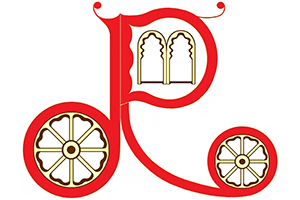斯洛文尼亚,克罗地亚和意大利共享美丽的半岛; ISTRIA & MORE
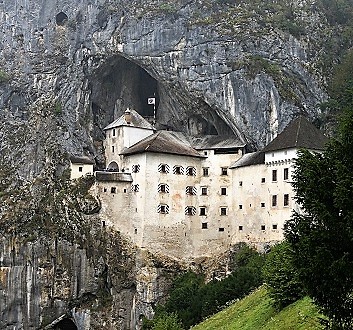
斯洛文尼亚, Predjama 城堡
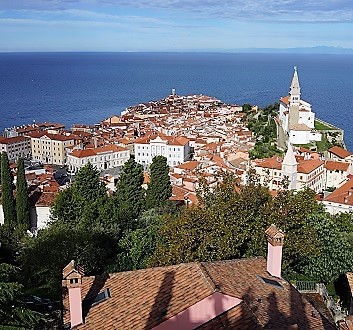
斯洛文尼亚, Istria, Piran
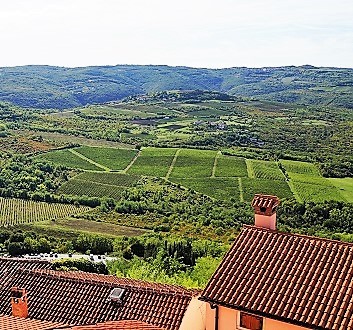
克罗地亚, Istria, Motovun
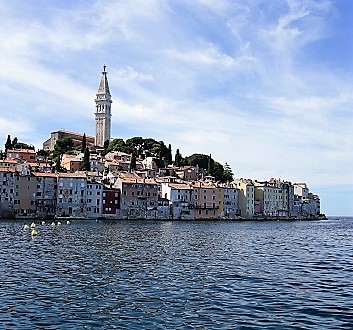
克罗地亚, Istria, Rovinj
旅游计划
天 1 - 到达 的里雅斯特, 意大利; 开车去 Portorož, 斯洛文尼亚
The seaside city of Portorož, Slovenia is situated 1 hour from Trieste, Italy and 1.5 hour from Ljubljana, the capital city of Slovenia. We arrive in Frankfurt, Germany, then take a direct flight from Frankfurt, Germany to Trieste, Italy. Upon arrival at the Trieste Airport - Friuli Venezia Giulia, we use the private transfer services. (approximately 1 hour drive). After checking into our hotel, we have dinner.
Note: We use two companies for our private tours and transfer services. We schedule our private tours with Slovenia Day Tours (slovenia-daytrip.si). We organize our airport transfers and a private tour with Turanus Transfers Slovenia (turanus.com).
Our Istria & More Itinerary covers fascinating places in Istria and a few more areas in Slovenia, Croatia and Italy. During our visit, the route between Slovenia and Croatia requires to cross a border with a valid US Passport. The Croatian Kuna rather than the Euro is the official currency in Croatia at the time of our travel. Istria is beautiful in autumn. Our September visit affords warm sea, plentiful sunshine and the occasional rain.
天 2 - Predjama 城堡, Postojna洞穴, Škocjan洞穴
In the morning, we drive over 1 hour to Predjama Castle, the world’s largest cave castle. Approaching the castle, we observe the Renaissance style structure built into the grey-colored cliffs. Audio guides and guided tours are available to explore the castle. After the tour, we drive 15 minutes to the Postojna Caves, the largest Karst cave system in Slovenia. The 1.5 hour guided tour starts with a train ride using an underground railway, followed by a guided walk along the stunning subterranean halls and rock formations. At the end of the tour, we visit the souvenir shops and have a quick lunch at the Postojna Caves complex. Next, we drive 30 minutes to the Škocjan Caves, a UNESCO natural and cultural heritage site. The guided tour requires a substantial amount of walking and follows the passageways along a steep gorge and impressive underground chambers. Upon exiting the cave, we observe the Karst topography surrounded by lush vegetation and take a funicular lift back to the entrance. We drive half an hour to our hotel and have dinner at the Fleur de Sel Restaurant.
天 3 - Piran
Today, we spend a day in Piran, a medieval town perched on the Šavrini Hills along the Adriatic Sea. After breakfast, we take an around 7 minutes’ taxi ride from our hotel to the Walls of Piran, the city’s remaining ancient defense system. Atop the Walls of Piran are panoramic views of the town and the sea. Next, we walk a few minutes to the Church of St. George, discovering its magnificent interiors and the bell tower with great views of the Adriatic Coast. We follow the winding streets to the Punta Lighthouse, the picturesque marina and Tartini Square. The town’s main square features the town hall, St. Peter’s Church and the statue of the famous violinist Guiseppe Tartini. We admire the Venetian House, a wonderful example of Venetian Gothic architecture. In the afternoon, we degust local seafood at the seaside Restaurant Pavel and Pavel 2. Afterward, we follow the coastal route for an hour, walking toward our hotel in Portorož.
天 4 – Lisjak橄榄农场,Lipica 养马场,米拉马雷城堡, 的里雅斯特
Early morning, we drive 20 minutes to the coastal town of Koper to briefly visit its historic square, called Titov Trg. Afterward, we drive 10 minutes through the backroads of the Istrian countryside to the Lisjak Olive Farm. Our scheduled private tour includes an explanation of the olive oil production process at the mill and the degustation of different olive oils. The next 30 minutes’ route inland takes us to the Lipica Stud Farm, the world’s largest operating stud farm with white Lipizzaner Horses. We join the English language group tour (the admission ticket includes a one-hour long guided tour) and after the tour we explore the estate by ourselves. After departing the estate, we drive around 45 minutes to the Miramare Castle set on the picturesque Italian coastline. Our multi-hour visit includes touring the castle’s apartments, walking through the gardens and having a simple lunch in the café situated on the castle’s grounds. Afterward, we drive 20 minutes to visit the medieval Old Town of Trieste. We walk in the Piazza dell’ Unità d’Italia, observe the Canale Grande and pause at the historic Caffe’ Degli Specchi for a light dinner and dessert. In the evening, we drive around 45 minutes to our hotel.
天 5 – Sečovlje Salina 自然公园, Rovinj, Motovun, Grožnjan
After breakfast, we drive 15 minutes to the Sečovlje Salina Nature Park, a functioning salt production area. At the nature park, we walk along the salt pans, visit the museum and purchase sea salt products at the official store. Afterward, we drive around 1.5 hour to Rovinj, a coastal town in Croatia. In Rovinj, we visit the Church of St. Euphemia, housing a collection of paintings and valuable relics of St. Euphemia. We stroll along Ulica Grisia and browse for local products at the Rovinj Market. A walk through the Rovinj’s Old City leads us to the Marshall Tito Square and picturesque harbor. We enjoy a seafood lunch and admire lovely views of the sea. After lunch, we drive 1 hour inland to Motovun, a picturesque medieval town in the Mirna River Valley. We walk alongside the fortified walls, admire the town’s Gothic style buildings and visit the Church of St. Stephen. At the Zigante Tartufi store, we purchase locally produced truffle products. After our visit, we drive 30 minutes to Grožnjan, a charming village with a maze of cobblestone streets, ancient stone houses, artisan shops and restaurants. We have an early dinner before driving 45 minutes to our hotel.
天 6 - 布莱德湖
Our excursion to northwestern Slovenia starts with a 1.5 hour drive to Lake Bled, a popular alpine resort destination. First, we tour the historic Bled Castle, situated on the cliff above the lake. Following the tour, we degust Slovenian cuisine at the Bled Castle Restaurant and admire the beautiful lake views. After lunch, we take a plenta boat to visit Bled Island and its Pilgrimage Church of the Assumption of Mary. Back at the shore, we walk along the lake and arrive at the Grand Hotel Toplice to sample the Bled Cream Cake, a local dessert. Late afternoon, we drive 1.5 hour back to our hotel in Portorož.
天 7 – Portorož, 放松的一天
Today, we spend a day in Portorož, a modern coastal town and the location of our hotel. We spend a few hours strolling on the beach, browsing for souvenirs at the Zakladi Slovenije store and having lunch at the seaside restaurant. After lunch, we relax by the swimming pool in our hotel. In the evening, we dine inside at our hotel’s Restaurant Sophia.
天 8 - 离开 Portorož; 开车到里雅斯特机场
In the morning, we take a scheduled private transfer to the Trieste Airport (approximately 1 hour drive) and take our flight home.
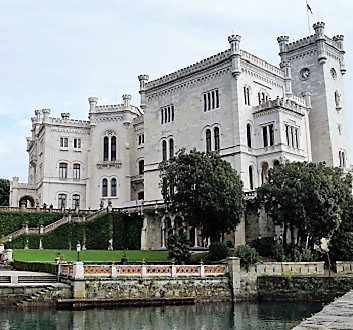
意大利, 米拉马雷城堡
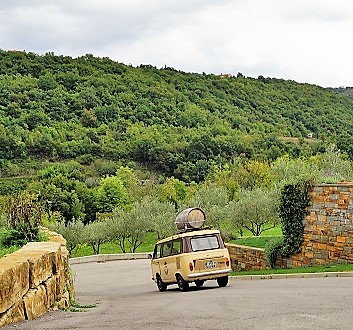
斯洛文尼亚, Istria, Lisjak Olive Farm
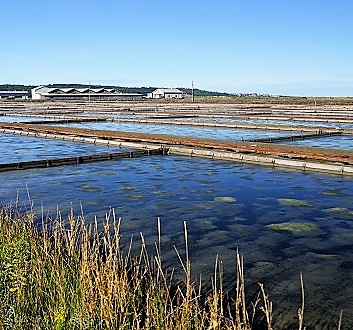
斯洛文尼亚, Istria, Sečovlje Salina 自然公园
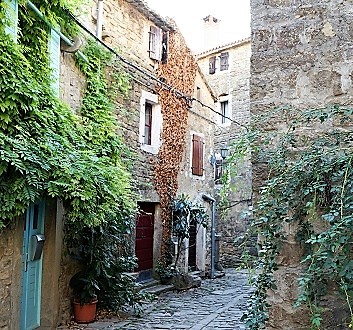
克罗地亚, Istria, Grožnjan
特别的地方
Istria – Istria is a peninsula in the Adriatic Sea, shared by Slovenia, Croatia and Italy. It boasts a premium geographic location with warm Mediterranean climate and a superb cuisine. Istria is a favorite summer destination of the Europeans thanks to its pretty beaches, picturesque coastline, beautiful seaside towns and charming hilltop villages. Croatian Istria covers the largest part of Istria and includes coastal towns and rustic inland towns in the western Croatia. Slovenian Istria covers the northwestern part of Istria and boasts pastel-colored towns, seaside resorts, terrain of vineyards and olive oil farms. Italian Istria, a very small part of Istria, covers the northern part of the peninsula. Over the span of centuries, Istria was ruled by different empires that had a significant impact on its architecture, culture and cuisine. Our Istria & More Itinerary covers the most fascinating and beautiful places of the region.
意大利 – The northeastern region of Italy, called Friuli Venezia Giulia, borders Austria, Slovenia and Adriatic Sea. Trieste, a seaport and the capital city of the region, charms its visitors with its medieval Old Town and a beautiful setting along the Gulf of Trieste. Trieste is an intersection of fascinating cultures: Italian, Austrian, Slovenian, Croatian and German. The Piazza dell’ Unità d’Italia, a beautiful sea facing square, showcases impressive 18th and 19th century buildings and historical cafés. The Government Building (Palazzo del Governo) has a beautiful façade decorated with expressive and colorful mosaics. A collection of magnificent buildings occupies the square, including the Trieste City Hall and the Palazzo del Lloyd Triestino. Inside the Palazzo Stratti, the Caffe’ Degli Specchi established in 1839, retains the splendor of the Habsburg Empire. At a short walk from the square, the Canale Grande, a 19th century 200 meter canal, is lined with lovely buildings and moored small boats. Across the Piazza dell’ Unità d’Italia, the seaside promenade overlooks the picturesque Gulf of Trieste and the Port of Trieste. A 20 minutes’ drive north of Trieste’s Old City leads to the Miramare Castle, the 19th century castle built by Archduke Ferdinand Maximilian of Hapsburg, the brother of the Austrian Emperor Franc Joseph. Set along the Gulf of Trieste, the castle complex includes a stunning white castle designed by Carl Junker with twenty-two hectares of English-style gardens. Inside the castle are over 20 rooms beautifully designed by Franz and Julius Hofmann. Noteworthy chambers are Maximilian and his wife Charlotte’s apartments, the Audience Hall decorated with red tapestry and the stunning Throne Room richly ornamented with wooden ceiling. A tree-lined pathway leads visitors to the Miramare Castle, offering views of the rocky coastline and the sea. Surrounding the castle, the expansive gardens boast many trees, rare plants, flowers, small ponds, sculptures and winding paths.
克罗地亚 – Croatian Istria, a region in the northwest of Croatia, borders the Adriatic Sea and Slovenia. Croatian Istria boasts a rocky coastline, charming coastal towns and rustic inland towns. Rovinj is a beautiful seaside resort, situated on the western coast of the Istrian Peninsula. This peninsula-shaped town has a premium hillside setting, affording lovely views of the Adriatic Sea. A stroll through Rovinj’s Old City reveals cobblestone streets, old stone houses and open-air markets. Rovinj, previously part of the Venetian Republic, boasts a Venetian architecture of pastel-colored buildings decorated with laundry hanging from the upper-floor windows. The Church of St. Euphemia located atop the hill, dominates the Old City’s landscape and offers sweeping views of the coast. The church’s bell tower is 60-meters tall and resembles the design of the St. Mark’s Basilica in Venice. Inside the church, the main altar showcases the statues of three saints while the nearby walls display a collection of paintings. Behind the altar, the collection of valuable relics of St. Euphemia is housed. Rovinj has a lot of quaint shops, charming streets, coastal pathways and picturesque squares lined with restaurants and cafes. Ulica Grisia is a pretty street with boutiques featuring artisan products, souvenirs and paintings. The Rovinj Market is a great place to buy fresh fruits, vegetables and local products, such as honey, jams and liqueur. The nearby Marshall Tito Square, the town’s main square, showcases the Town Clock Tower with its red façade and a Venetian lion beneath the clock. The Venetian lion is part of the city’s Venetian heritage. Rovinj’s harbor is a working fishing port with a waterfront promenade offering panoramic views of the Old City and the sea. Rovinj is a beautiful Croatian town with a truly unique character. Traveling inland from the coast, we arrive to Motovun, a picturesque medieval town constructed on a hilltop in the Mirna River Valley. The 12th and 14th century Town Walls encircle Motovun and overlook the surrounding vineyards and forest. The Motovun Forest is famous for harvesting premium grade white and black truffles, an Istrian delicacy. A Zigante Tartufi store has, in season, a selection of fresh white and black truffles as well as chopped or minced truffles packed in glass jars. Motovun, historically part of the Venetian empire, retains its Venetian symbols and architecture. Our exploration of the town encompasses walks alongside the fortified walls, noticing the Gothic style buildings and visiting the Church of St. Stephen, designed by the Venetian architect Andrea Palladio. Motovun is a lovely town with lovely shops and restaurants. An additional venture inland takes us to Grožnjan, a medieval village built atop a mountain. A walk through the village reveals a maze of narrow cobblestone streets, ancient stone houses, artisan shops, restaurants and cafés. Grožnjan, known as a village of artists, is occupied by many painters, sculptors and musicians who live there and create their works of art. The village’s hillside setting affords stunning sunsets and views of the surrounding vineyards, olive trees and valley. In the village, the visitors will find quaint shops selling original works of art, souvenirs, truffle products and regional wines and brandies. Grožnjan is a magical place where life, art, music and food perfectly connect. Paula, situated at the southern part of peninsula, is known for its ancient Roman amphitheater, Temple of Augustus and Hercules Gate. We did not visit Paula due to time restrictions.
斯洛文尼亚 – Slovenian Istria, a region in the southwest of Slovenia, is part of the Slovene Littoral, a larger geographical region in Slovenia. Slovenian Istria boasts medieval towns, seaside resorts, strategic port, nature park, terrain of vineyards and olive oil farms. Koper, situated southwest of the city of Trieste in Italy, is a strategic seaport in Slovenia and an important transportation route used by central European countries. Koper’s historic area includes Titov Trg, a main square exhibiting the 15th century Cathedral of the Assumption. Located 5 kilometers from Koper is the Lisjak Olive Farm (lisjak.com/en), an olive mill that produces premium quality olive oils. The Vintage Gourmet Tour or the Olive Mill and Tasting Tour may be arranged for groups or private visitors. During our private tour, we learn about the olive oil production process and degust Lisjak Olive Oils by drinking olive oil straight. A selection of classic and flavored olive oils and olive oil based cosmetics are available for purchase at the Lisjak estate. Not far from the picturesque Istrian countryside is Portorož, a modern coastal resort and a popular tourist destination with sandy beaches, gambling entertainment, nearby nature parks and a scenic waterfront promenade. The Kempinski Palace Portorož Istria is a luxury five-star hotel situated in the center of Portorož, an ideal location to explore the beauty of Istria.
Piran – Piran, a medieval town in Slovenian Istria, is perched on the Šavrini Hills along the narrow peninsula in the Adriatic Sea. The pastel-colored houses, the Church of St. George and the Punta Lighthouse are the symbols of this beautiful coastal town. Situated on the hill above Piran, the Roman Catholic church is dedicated to Saint George, the town’s symbolic protector. The Church of St. George, built in the 14th century, boasts a magnificent wooden ceiling and Venetian frescoes. The bell tower, completed in the 17th century during the Venetian rule, offers panoramic views of the Adriatic Coast. The Walls of Piran were originally constructed as a defense system against the Ottoman Empire and gradually expanded during the period of the Venetian rulers. A climb atop the Walls of Piran rewards us with a panoramic views of the red-roofed city and the encircling sea. Piran impresses us with its picturesque marina, medieval architecture, winding streets and old colorful houses. Tartini Square, the town’s main square, features the town hall, St. Peter’s Church and the statue of the famous violinist Guiseppe Tartini. Facing the main square is the 15th century Venetian House, a richly ornamented building with a red façade, a wonderful example of the Venetian Gothic architecture. Piran is a captivating old town with waterfront restaurants and cafes overlooking the harbor. The seaside Restaurant Pavel and Pavel, 2 serves an excellent seafood and offers great sea views.
Postojna洞穴公园 – Situated 49 kilometers from the capital city of Slovenia, the Postojna Cave Park (postojnska-jama.eu/en) contains two magnificent landmarks: the Predjama Castle and the Postojna Caves. The Predjama Castle is a stunning medieval castle, built in the middle of a cliff and connected to tunnels and the cave. In the 15th century, the legendary knight Erazem of Predjama lived in the castle. The Predjama Castle, the world’s largest cave castle, comprises the castle structure and the cave under the castle that is inhabited by a colony of bats during the winter season. Guided tours to the cave under Predjama Castle are available from May to September. The Predjama Castle is a remarkable Renaissance style structure, featuring white castle walls built into the grey-colored cliffs. Situated 10 kilometers from the Predjama Castle is the largest Karst cave system in Slovenia. The Postojna Caves are a magnificent natural creation, consisting of 24 kilometers of underground tunnels. The 1.5 hour guided tour starts with a train ride using an underground railway created 140 years ago, followed by a guided walk along the designated tunnel pathways. The Postojna Caves boasts magnificent subterranean halls, stunning rock formations and diverse fauna. The symbol of the Postojna Caves is “Brilliant”, a five-meter tall white stalagmite. Many animal species reside in the caves, including the most famous organism located in the cave’s aquarium, called the proteus or “human fish”. Inside the cave, low temperatures and high humidity require the visitors to wear warm clothes and comfortable walking shoes. After our tour, we visit the souvenir shops and have a quick lunch at the Postojna Caves complex.
Škocjan 洞穴公园 – The Karst Plateau (Karst Region) extends from Vipava Valley in southwestern Slovenia to the Gulf of Trieste in northeastern Italy. The Karst Region is a limestone plateau with a rocky landscape, a forested area, underground rivers, spectacular caves, numerous vineyards and medieval settlements. The Karst Plateau consists of over 8,000 caves that are natural underground wonders with unique plants and organisms. The Škocjan Caves (Škocjanske Jame), a UNESCO natural and cultural heritage site, were created by the Reka River that flows fifty five kilometers on the surface and sinks underground near the village of Škocjan. This underground gorge, collapsed dolines and caves serve as the habitat for bats and endangered birds. The guided tour traverses the passageways overlooking the steep gorge and impressive underground chambers. The Škocjan Caves (park-skocjanske-jame.si/en) admission ticket includes a guided tour in English and other languages. Visitors are not permitted to photograph the caves’ interiors, only the exterior karst landscape. Note: The visit to the caves requires a substantial amount of walking.
Sečovlje Salina 自然公园 – The northeastern coast of the Adriatic Sea reflects hundreds of years of tradition of artisan salt production. The Sečovlje Salina Nature Park is a 750 hectare area, situated in the southwestern Slovenia near the Croatia border. Lera is an active salt production area situated in the northern part of the park and separated by the Grande Canal from the southern part of the park, called Fontanigge. These salt pans are man-made and started at the River Dragonja. The cultivation of Petola, the artificially cultivated crust that filters and separates the mud from the salt, started in the 14th century. Today, Sečovlje salt production follows the traditional methods and modernized processes. The salt pans of Sečovlje attract different birds that feed, breed and stay there during the migration period. The Sečovlje Salina Nature Park can be visited only at official hours (we advise verifying the opening hours before the visit). The visitors may walk along the salt pans, visit the museum, spend time at the spa and purchase artisan products at the official store.
Lipica 养马场 – Located in the Slovenian Karst Region, the Lipica Stud Farm is the oldest European stud farm, established in 1580. The Lipica Stud Farm complex includes the Lipikum Museum, Manor, Manor Garden, Stable of Young Mares, Old Riding Hall, Stable for Carriage Horses, Indoor Riding Hall and the Oldest Stable. It is the world’s largest operating stud farm with white Lipizzaner Horses, a breed of horses originating in Slovenia. The estate grounds feature a stunning avenue lined with trees and expansive nature, and may be visited as part of a guided tour and on your own. Our English language group tour (other languages are available) includes a scheduled tour with a guide, followed by some time to explore the estate by ourselves.
布莱德湖 – Part of the Southern Limestone Alps, the Julian Alps stretch from Italy to Slovenia. Situated in northwestern Slovenia, the Triglav National Park encompasses the majority of the Julian Alps, Soča River, Lake Bohinj and magical Lake Bled. Mount Triglav, the highest peak of the Julian Alps, creates a magical setting for the surrounding towns. Lake Bled, a popular alpine resort destination, boasts a magnificent cliffside castle, Bled Island in the middle of the lake and thermal springs. Romantic cruises on traditional plenta boats take visitors to Bled Island to visit the Pilgrimage Church of the Assumption of Mary. The Bled Castle, perched on the cliff above the lake, is the oldest castle in Slovenia. The Bled Castle Restaurant, an ideal place for lunch, serves an excellent contemporary Slovenian cuisine and offers stunning views of the lake. The visitors discover this beautiful region by walking around the lake, riding bicycles, hiking to the Vintgar Gorge and riding a horse-drawn carriage around the lake. On the shores of Lake Bled, the Grand Hotel Toplice boasts panoramic views and serves the original Bled Cream Cake (Kremšnita). This local dessert, made with custard and cream, then lightly dusted with powdered sugar, is simple and delicious.
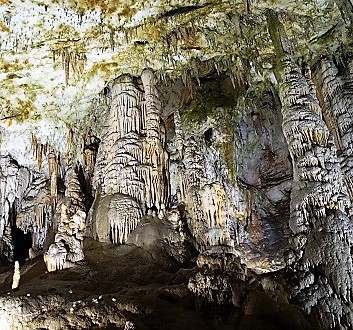
斯洛文尼亚, Postojna洞穴公园
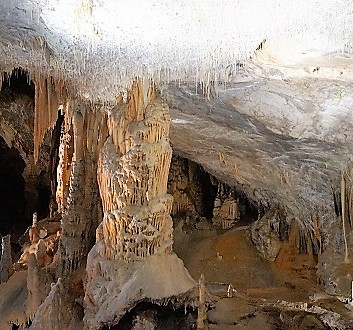
斯洛文尼亚, Postojna洞穴公园
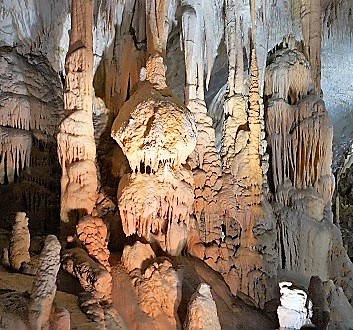
斯洛文尼亚, Postojna洞穴公园
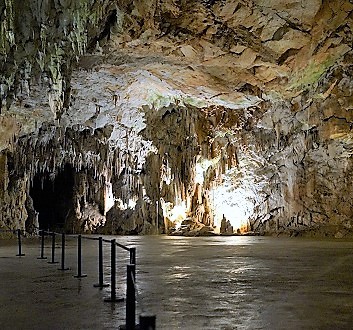
斯洛文尼亚, Postojna洞穴公园
最好的冒险
斯洛文尼亚的洞穴 – Slovenia is blessed with a remarkable topography of rocky coastline, beautiful valleys, magical lakes and extraordinary caves. The Karst Plateau (Karst Region) extends from the Vipava Valley in southwestern Slovenia to the Gulf of Trieste in northeastern Italy. The Karst Plateau consists of over 8,000 caves that are natural underground wonders. The Škocjan Caves (Škocjanske Jame), a UNESCO natural and cultural heritage site, were created by the Reka River that flows fifty five kilometers on the surface and sinks underground near the village of Škocjan. This underground gorge, collapsed dolines and caves serve as the habitat for bats and endangered birds. The guided tour traverses the passageways overlooking the steep gorge and impressive underground chambers. Situated 49 kilometers from the capital city of Slovenia, the Postojna Cave Park contains two magnificent landmarks: the Predjama Castle and the Postojna Caves. The Postojna Caves are a magnificent natural creation, consisting of 24 kilometers of underground tunnels. The 1.5 hour guided tour starts with a train ride using an underground railway created 140 years ago, followed by a guided walk along the designated tunnel pathways. The Postojna Caves boasts magnificent subterranean halls, stunning rock formations and diverse fauna. The symbol of Postojna Caves is “Brilliant”, a five-meter tall white stalagmite.
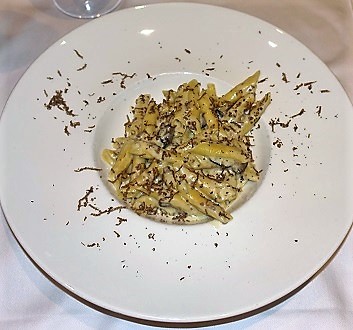
斯洛文尼亚, Istria, Fuži 意大利面 & 松露酱
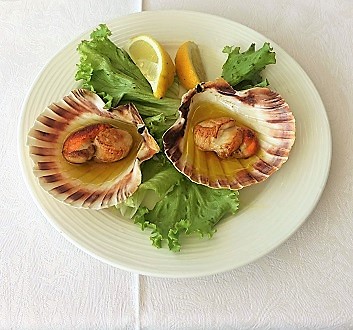
斯洛文尼亚, Istria, 扇贝
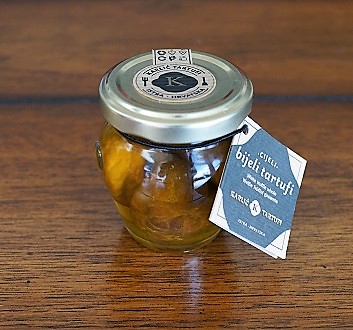
克罗地亚, Istria, 白松露
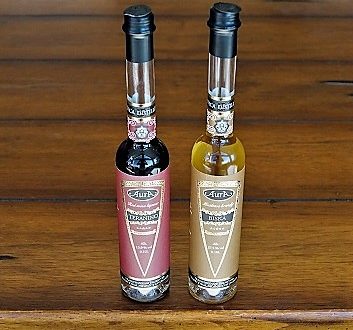
克罗地亚, Istria, Biska Brandy
所选的菜
Istria的美食 – Istria’s gastronomy unifies diverse regional culinary styles and local ingredients. The Istrian cuisine, influenced by the ancient empires, is praised for its own unique character. Istrian dishes are made with locally-grown organic produce, fresh seafood, specialty pasta, aromatic truffles, artisan olive oils and regional wines. Istria’s coastal towns are popular tourist destinations, offering favorable Mediterranean climate, pretty beaches and gourmet food. The crystal waters of the Adriatic Sea supply a wide variety of fresh fish and shellfish, including fresh scallops. While touring the coastal towns of Piran in Slovenia and Rovinj in Croatia, we degust delicious oven baked Scallops on the Shell with their orange-coral roe attached. Influenced by the Italian cuisine, Istria developed a tradition of making its own specialty pasta. Fuži Pasta is a delicious quill-shaped hollow tubes pasta, traditionally prepared with a truffle sauce and shaved fresh truffles. Leaving Istria’s coastline, we head inland toward the picturesque hillside villages and fertile Alpine terrain. Motovun is a charming medieval town in Croatia, encircled by an expansive forest. The Motovun Forest is famous for harvesting fresh white and black Truffles, an Istrian delicacy. The Istrian white truffles are praised for their unique aroma and intense earthy flavor. Zigante Tartufi (zigantetartufi.com) offers a selection of seasonal fresh white and black truffles, as well as chopped or minced truffles packed in glass jars. In Motovun, we shop at the Zigante Tartufi store, selecting a variety of truffle products. The Istrian brandy is another prominent souvenir we bring home. Biska, a brandy flavored with mistletoe, has a rich and slightly bitter flavor. The neighboring Grožnjan village, also known as a village of artists, enchants visitors with its cobblestone pathways, quaint houses and lovely boutiques selling art, souvenirs and regional delicacies. AurA (aura.hr), a distillery of Istrian Brandy, has a lovely shop in Grožnjan, offering a nice selection of their wines and brandies. Biska, Ruda and Medica are traditional Istrian brandies. The visitors to Slovenia, Croatia and Austria will find another culinary delicacy, the Styrian Pumpkin-Seed Oil. It is made by pressing the roasted pumpkin seeds, without their shells, delivering an aromatic and flavorful condiment. The Styrian Pumpkin-Seed Oil from Slovenia, defined by its green color and nutty flavor, is often used with salads and desserts.
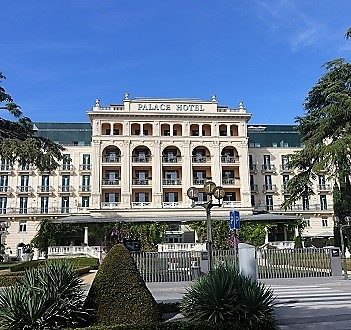
斯洛文尼亚, Istria, Kempinski Palace Portorož Istria, 斯洛文尼亚
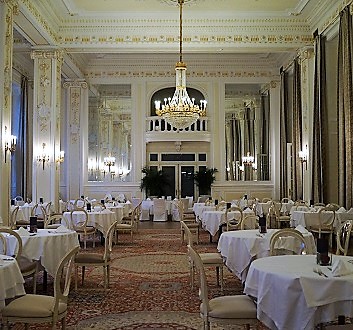
斯洛文尼亚, Istria, Kempinski Palace Portorož Istria, 斯洛文尼亚
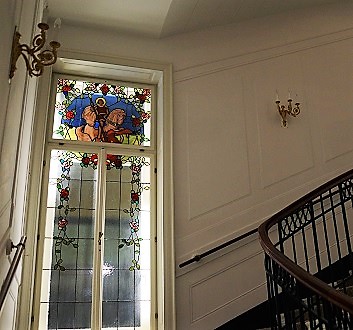
斯洛文尼亚, Istria, Kempinski Palace Portorož Istria, 斯洛文尼亚
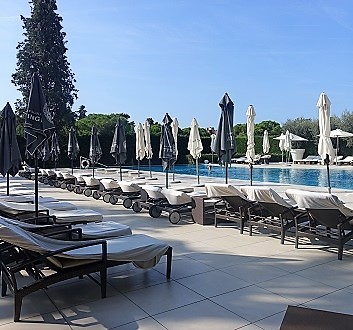
斯洛文尼亚, Istria, Kempinski Palace Portorož Istria, 斯洛文尼亚
首选酒店
Kempinski Palace Portorož Istria, 斯洛文尼亚 – The Kempinski Palace Portorož Istria is a luxury five-star hotel situated in the center of Portorož, a popular seaside resort region. The historic building and a modern building have a collection of suites and rooms with sea or garden views. The interiors of the historic building are decorated in a classic style with subtle colors. The modern building’s décor features stylish, colorful and contemporary themes. The hotel’s spa and swimming pool offer tranquility and relaxation. The Crystal Hall, an impressive dining hall ornamented with beautiful chandeliers, serves a superb breakfast buffet every morning. The Fleur de Sel Restaurant serves an excellent Mediterranean cuisine and offers lovely views of the Adriatic Sea. A visit to the Restaurant Sophia reveals magnificent interiors with chandeliers, stone pillars and a large fireplace. The Kempinski Palace Portorož Istria boasts a premium seaside location and serves as an ideal destination to explore the natural and historic treasures of Istria.
